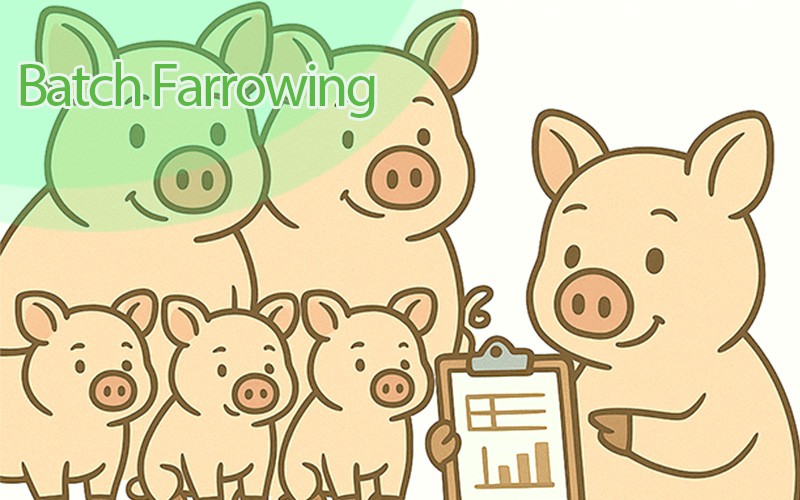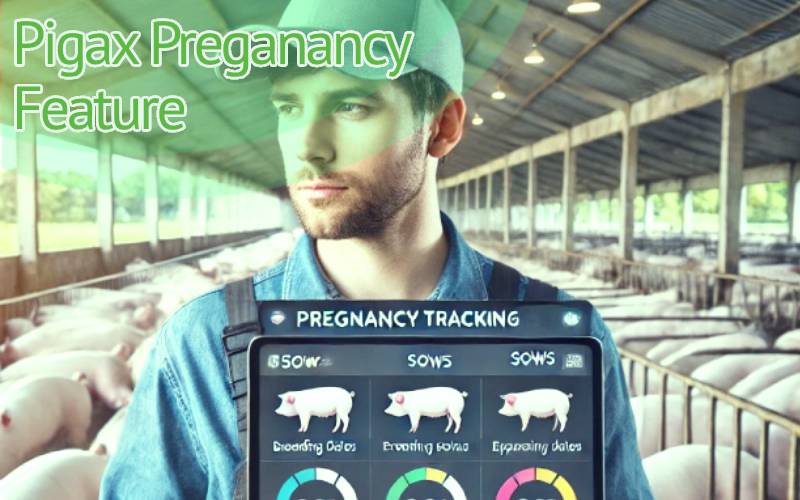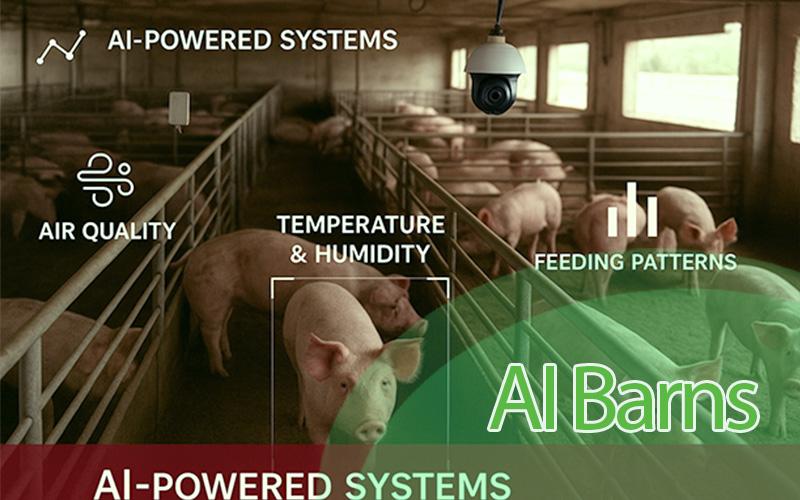5 Ways AI Is Quietly Transforming Pig Farming Today
Pig farming has always combined hard work, experience, and close observation. Farmers rely on their eyes, ears, and instincts to make the right calls for their herds. But today, something new is happening inside barns across the world. Artificial Intelligence (AI), a technology once reserved for tech companies and research labs, is now becoming an everyday tool in agriculture. In fact, there are areas where AI is already making an impact in pig farming. The changes are not always loud or flashy. Instead, they are happening quietly, behind the scenes, making farming more efficient, sustainable, and predictable.
Here are five ways AI is reshaping pig farming in ways that many farmers might not even notice at first glance.
1. Smarter Health Monitoring
In traditional farming, farmers watch pigs closely to spot early signs of illness — coughing, reduced appetite, or unusual movement. The challenge is that by the time symptoms are visible, it might already be too late to prevent spread across the herd. AI is changing this dynamic.
With advanced cameras, microphones, and thermal sensors, AI systems can analyze patterns in animal behavior that human eyes might miss. For instance, an AI program can detect subtle changes in a pig’s movement, or even pick up the sound of a cough that signals respiratory disease. These systems don’t get tired or distracted; they monitor around the clock.
For farmers, this means fewer surprises. Instead of reacting to a health crisis, AI allows early intervention, which reduces treatment costs and protects the entire herd. Over time, this not only saves money but also improves animal welfare by catching problems early.
2. Feeding and Nutrition Optimization
Feed is often the single largest expense in pig farming, sometimes making up more than half of operating costs. Overfeeding leads to waste, while underfeeding slows growth. Traditionally, feeding decisions rely on averages: pigs of a certain age get a certain amount of feed. But every pig is different.
AI is making feeding far more precise. By collecting data on each pig’s weight, growth history, and health, AI-driven feeding systems can adjust rations to match individual needs. A pig that grows faster can receive more targeted nutrition, while one that needs less won’t be overfed.
This level of personalization saves farmers money, reduces waste, and ensures pigs are healthier and stronger. Instead of guessing, farmers get real-time insights into how their feed strategies are working.
3. Predicting Growth and Breeding Outcomes
Breeding and growth prediction have always been part science, part intuition. Farmers look at genetics, past performance, and experience to decide when pigs are ready for market or which animals to breed. But AI is making these decisions more accurate than ever.
By analyzing large amounts of historical and real-time data, AI systems can forecast weight gain, predict when pigs will reach ideal market size, and even identify which sows and boars are most likely to produce strong, healthy piglets. These predictions go beyond simple averages; they account for environmental factors, feeding patterns, and health history.
The result is better planning. Farmers know more precisely when pigs are ready for sale, which improves market timing and revenue. And breeding decisions become more data-driven, building stronger herds over time.
4. Creating the Ideal Barn Environment
Temperature, humidity, and ventilation play a huge role in pig health. Too hot, and pigs face heat stress. Too cold or poorly ventilated, and the risk of illness increases. Managing these factors manually can be challenging, especially as weather patterns change.
AI systems can now connect directly to climate control equipment inside barns. By monitoring environmental conditions and pig behavior, they make automatic adjustments to keep conditions optimal. For example, if sensors detect rising heat stress, the AI system can increase ventilation or adjust cooling systems.
This automation reduces the burden on farmers, ensures pigs are always in the best possible environment, and lowers losses caused by preventable stress factors. Healthy environments mean healthier pigs and more consistent productivity.
5. Making Data Useful for Farmers
Pig farming has always involved data: records of feeding, growth rates, medicine use, and breeding results. The challenge has been turning this mountain of information into something practical. AI changes that.
Modern AI platforms collect information from across the farm and turn it into easy-to-read dashboards and alerts. Instead of sifting through spreadsheets, farmers can see at a glance if something looks unusual — a sudden dip in growth, higher feed waste, or early signs of illness.
This doesn’t replace the farmer’s role. It strengthens it. Farmers can combine their experience with AI-driven insights, making quicker and more informed decisions. Less time spent recording data means more time focusing on the herd.
Challenges to Consider
While the benefits of AI in pig farming are clear, adoption isn’t without challenges. The cost of sensors and systems can be high, especially for smaller farms. Reliable internet connectivity is still a barrier in many rural areas. Farmers also need training to understand and act on the insights AI provides.
These challenges are real, but the technology is moving quickly. Just as smartphones became accessible to nearly everyone, AI solutions for farming are becoming more affordable and user-friendly each year.
Final Thoughts
The transformation of pig farming by AI is happening quietly but steadily. From detecting early illness to optimizing feed and creating healthier barn environments, AI is not replacing farmers — it is supporting them. The technology handles the constant monitoring and complex data analysis, leaving farmers free to focus on care, strategy, and decision-making.
For farmers willing to embrace it, AI represents a powerful tool to make farms more efficient, more sustainable, and better prepared for the future. The change may be quiet, but its impact will be loud and clear in the years to come.




